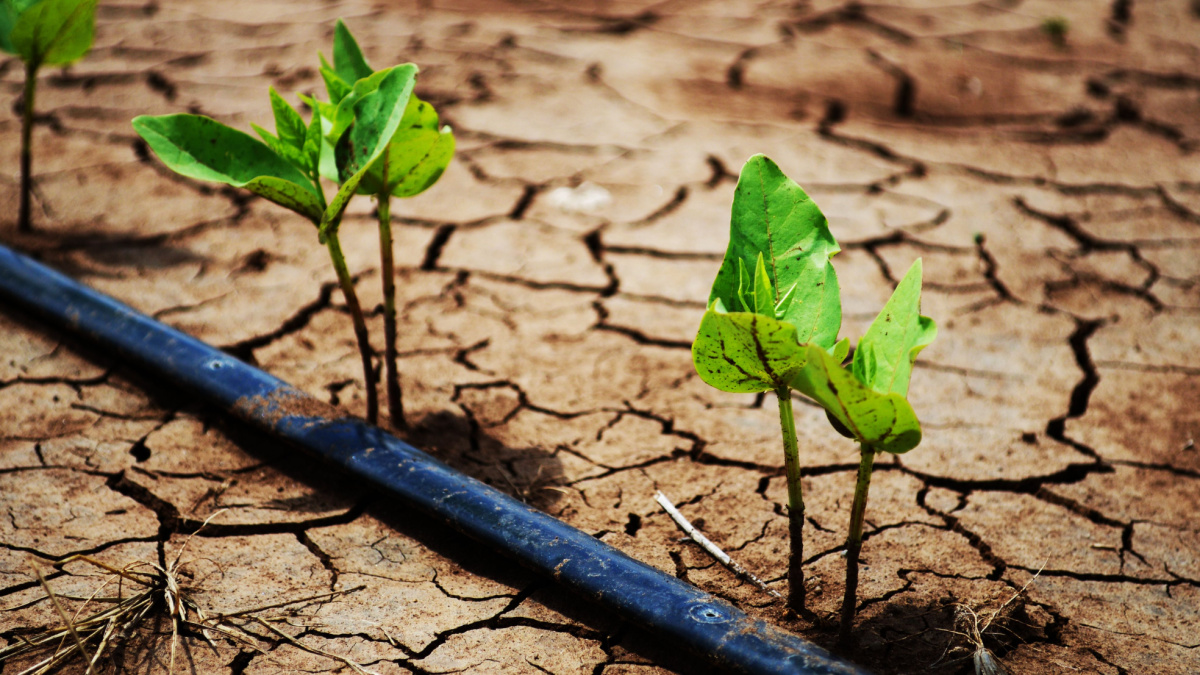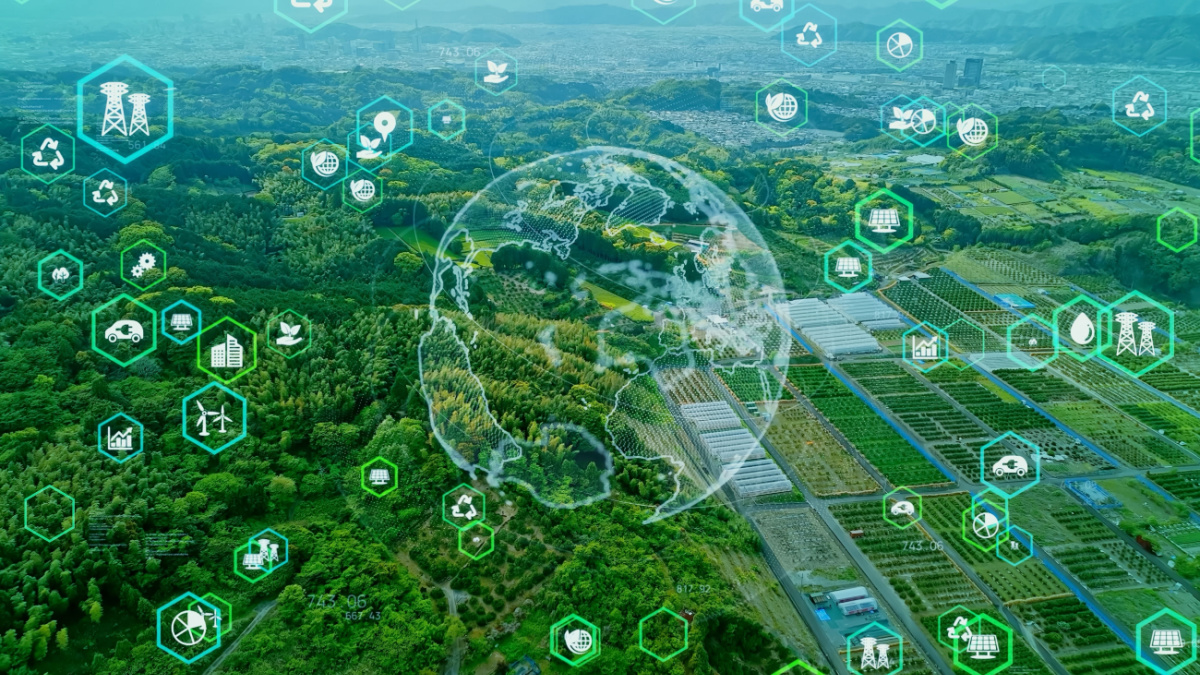The challenge of food security in the 21st Century

Producing nutritious food while protecting the natural environment and adapting to climate risks are some of the biggest global challenges for the food industry in the 21st Century. By Sylvia Thompson.
The key questions that policymakers, food producers and processers, retailers and consumers must contemplate are, how can we reduce the environmental footprint of our food systems, how can we strengthen resilience within food production, and how can we ensure healthy and affordable food for future generations?
An international survey by An Bord Bia entitled Striking the balance: Plant, Protein and the Planet, that was published in April 2023, reported that one in seven people in the UK and Ireland are willing to change their diets to help the environment. European policies such as the Farm to Fork Strategy and EU Biodiversity Strategy in the Europ eanGreen Deal and the new Common Agricultural Policy (CAP) are encouraging farmers to pull back from intensive agricultural practices so as to protect the natural environment on their farms. And yes, many farmers are now alert to the need to change – both to protect their income from spiralling costs of artificial fertilizers and risks of fodder crises due to extreme weather events, as well as a growing awareness that, as custodians of the land, it is their duty to protect the water, soil and air which allow habitats and species to co-exist within their farms whilst producing nutritious food. But these changes are not just happening in Ireland and Northern Ireland. Across the world, there is a growing interest among researchers and policymakers in sustainable food systems, an approach which calls for the safe production of nutritious food whilst protecting the natural environment in which that food is grown, stored, transported, sold and consumed.
Global food systems, Climate Change and sustainability

Global food systems currently account for 31 per cent of greenhouse gas (GHG) emissions with food waste accounting for 8-10 per cent of this. Agriculture and food production is also the sector most impacted by climate change. Yet, up to recently, the transformation of food systems was not central to discussions at the annual United Nations Climate Change Conference of Parties (COP). Speaking at COP 26 in Glasgow in 2021, the Special Envoy for the UN Food Systems Summit, Dr Agnes Kalibata called for the UN Climate Conference to significantly ramp up attention to food and agriculture. “There is no path to a 1.5 degree target without putting food front and centre in our COP conversations. The intersection between climate and food is profound – if we do not address food systems-driven climate emissions, we simply cannot make our 1.5 C target; and if we don’t food systems will suffer the most,” she said. Issues such as an increase in food and waterborne diseases, and specifically an increase in fungal and insect infections in plants, are some of the biggest threats to food production due to climate change.
The lack of attention on food systems was also seen at the Kumming-Montreal Global Biodiversity Framework which was launched at the Convention on Biological Diversity COP15 (UN Convention on Biological Diversity) in November 2022. Despite food and agriculture being recognised as the largest sources of environmental degradation, there was no mention of food or food systems in the four Global Goals for 2050 which emerged from this event.
The transformation of food systems will also be necessary to achieve the Sustainable Development Goals (SDGs) by 2030. For example, addressing the co-existence of over-nutrition and malnutrition will be crucial to meeting health objectives in SDG 3. Agriculture is also central to managing water resources to achieve SDG 6. The sustainable use of fish stocks is fundamental for the conservation and sustainable use of our oceans and seas in SDG 14. To align ourselves with SDG 12 for sustainable consumption and production, we have to reduce food waste substantially. And the protection, restoration and sustainable management of terrestrial ecosystems in SDG 15 will rely heavily on agricultural and forestry approaches which protect species and habitats.
The Food Systems Partnership approach

The newly formed Food Systems Partnership, which had its first ever Food Systems Pavilion at COP27, is a partnership of international food organisations. It launched its report, Pathways for Food Systems Transformation at the Bonn Climate Change Conference in June 2023 in advance of COP28 in Dubai the following November. Agreeing on a definition of what a food systems approach incorporates will be a key starting point at COP28. The Organisation for Economic Cooperation and Development defines the term ‘food systems’ as encompassing all elements and activities related to producing and consuming food and the effects of such, including economic, health and environmental outcomes.
“We know what we have to do yet when you talk about sustainability, you have to include environmental, social and economic sustainability. We need agriculture and food producers to be a thriving part of our economic and social sustainability in rural Ireland”
Dr Eoin Lettice, lecturer in food production and sustainable agriculture at University College Cork says that from an environmental and human health point of view, it is widely recognised that we need to reduce both our consumption of processed foods and dairy and beef. “We know what we have to do yet when you talk about sustainability, you have to include environmental, social and economic sustainability. We need agriculture and food producers to be a thriving part of our economic and social sustainability in rural Ireland,” he says. The Pathways for Food Systems Transformation report notes that while more countries are recognising that food systems need to be a part of national climate solutions, most countries have still to include and implement actions on food systems in their climate strategies and action plans.
The Food Systems Partnership recommends a transition to nutritious, whole-food diets underpinned by sustainable, diversified food production as a key to successful climate strategy with multiple health co-benefits. It states that “a shift to diets focussing on local food contexts and produced within planetary boundaries can reduce GHG emissions, decrease land use and enable protection and restoration of wildlife”. It also suggests that these transitions must “prioritise affordability and accessibility, ensuring that nutritious and sustainable foods are available to all”. Globally, it is estimated that 700 million people are facing hunger and three billion can’t afford healthy diets.
The Food Systems Partnership report states that a critical component of promoting healthy and sustainable diets is “to diversity protein supply which could include aquatic, plant-based, insect-based and laboratory-cultured proteins”. Diversification does not come without risks. For example, in January 2023, the European Commission Novel Food Regulation gave the go ahead to a larval form of the house cricket as a food ingredient in a dried or frozen paste or powder form. This followed a scientific evaluation by the European Food Safety Authority who concluded that it did not pose a risk to human health. Nonetheless, products containing this novel ingredient must include labelling citing that it is a potential allergen.
The Food Systems Partnership report acknowledges that no country in the world except for Ethiopia supports farmers to diversify their supply of proteins away from beef towards poultry and small ruminants as part of its Nationally Determined Contributions or ‘NDCs’ (NDCs are each country’s commitments to reach 1.5 degrees Centigrade as specified in the Paris Agreement, adopted in COP 21 in 2015). The report also recommends a shift away from harmful food and farming practices such as chemical-intensive agriculture, intensive livestock systems and the production of ultra-processed foods but in so doing advocates for wide engagement with policymakers, food producers, farmers and local communities, as well as financial leaders and the private sector to realise this goal.
Interestingly, many of the main points raised in Pathways for Food Systems Transformation report are echoed in the Fixing Food Together position paper published by the newly formed Climate and Health Alliance group in Ireland. This group is made up of organisations including the Irish Heart Foundation, The Irish College of General Practitioners, the Irish Nutrition and Dietetic Institute and The Royal College of Surgeons of Ireland. The Fixing Food Together report calls for a new cabinet sub-committee on food – that includes both the Minister for Health and the Minister for Agriculture – with a mandate to protect public health and develop a sustainable farming sector in tandem. It also argues that the big drivers of poor human and planetary health can only be addressed through national policies that are free from vested interests and focused on enabling a healthy, environmentally friendly food environment. It contends that this approach will “support people to make healthy sustainable food choices and protect the most vulnerable groups from a proliferation of cheap and intensely marketed energy dense food”.
A vision for Ireland
The Irish Government targets are for agriculture to reduce its emissions by between 21 and 30 per cent (25 per cent on average) by 2030 while in the UK, specific targets for reducing agricultural emissions will be tied into a new land use strategy which is due to be published this year.
In Ireland, agriculture is responsible for about 38 per cent of national GHGs in 2021 while in the UK, agricultural GHG emissions account for about 11 per cent of total emissions. These emissions are mainly from methane from livestock, nitrous oxide from use of nitrogen fertilizer and manure management. The Irish Government targets are for agriculture to reduce its emissions by between 21 and 30 per cent (25 per cent on average) by 2030 while in the UK, specific targets for reducing agricultural emissions will be tied into a new land use strategy which is due to be published this year. The Teagasc-led Signpost Programme, with 100 demonstration farms undertaking sustainability measures, is one of the strongest efforts to inspire other farmers to reduce emissions. Other measures such as Department of Agriculture, Food & the Marine supports to increase organic production from a low of 2 to 3 per cent, to 10 per cent by 2030 is also expected to contribute to reduced emissions.

The Irish Government’s Food Vision 2030 Strategy sets itself in the context of a holistic “Food Systems” approach to develop a climate smart, environmentally sustainable agri-food sector which is “climate neutral” by 2050 whilst producing food that is “safe, nutritious and appealing”. While the language in this strategy is high on aspiration, it is notable that the non-governmental organisation with responsibility for the environmental pillar pulled out of its stakeholder committee in 2021, before its publication.
Emily Binchy is the Justice and Home Affairs Researcher with the Institute of International and European Affairs. In her December 2022 report ‘Seeking Symbiosis - Does the new CAP resonate with the ambitions of the European Green Deal?’, Emily wrote, “The new CAP will not only help the agri-food sector meet the obligations of the European Green Deal but will transform the way farmers operate as stewards of the land, provide for cleaner air and water, bolster sustainable food production and engage both farmers and consumers in building viable and sustainable communities in rural Ireland.” But, she added, “while Ireland’s CAP Strategic Plan goes in the right direction in terms of aligning the CAP with the ambitions of the European Green Deal, it is likely however to meet with some resistance along the way”. The recent National Economic and Social Council report on a Just Transition in Agriculture and Land Use sets out the approach for a fair, equitable and inclusive way forward for agriculture and land use in Ireland.

“We need a land use strategy with large scale land use change in the next 20 years to reverse environmental damage and have different land types for carbon storage, food and fibre, flood alleviation with each farm mapped on a regional basis”.
Everyone now realises that farmers will have to be paid for protecting nature on their land, especially if it means setting aside land from that used for food production. Speaking at a recent talk in Galway on sustainable food systems in Ireland, Dr James Moran, Senior Lecturer in ecology and biology at the Atlantic Technological University of Ireland said that Ireland’s current food system will not survive if it doesn’t adapt to climate change. “We need a land use strategy with large scale land use change in the next 20 years to reverse environmental damage and have different land types for carbon storage, food and fibre, flood alleviation with each farm mapped on a regional basis”. But alongside such systematic land use change, other local and national efforts will have to contribute to a sustainable food system that simultaneously prioritises nutritious food and the natural environment.
At the Fixing Food Together conference in Dublin in May, Professor Norah Campbell, Associate Professor and Lecturer in critical marketing at the Business School in Trinity College Dublin suggested the Government could subsidize supermarkets that don’t sell ultra-processed foods. According to Campbell, industry-led reformulation does not make products nutritious or healthy. She recommends a “wholefood formulation” strategy which would shift national reliance on ultra-processed foods to processed and unprocessed foods. Such an approach would also address environmental issues as the current Irish diet exceeds planetary boundaries by 226 per cent (with red meat and dairy accounting for the highest GHG emissions in the Irish diet). More food markets where food producers sell directly to consumers would also help keep profits local. Community-based cookery classes promoting healthy eating and a return to eating seasonal foods (whilst preserving food when it’s fresh and plentiful to eat at other times of the year) are other tried and trusted approaches to bring nutritious food centre stage again. It’s not that long ago since we relied on more locally produced foods that were grown in harmony with nature. Can we turn the tables in the next ten to twenty years to protect our health and our planet?
Journalist and author, Sylvia Thompson writes on health, the environment and science for The Irish Times.



